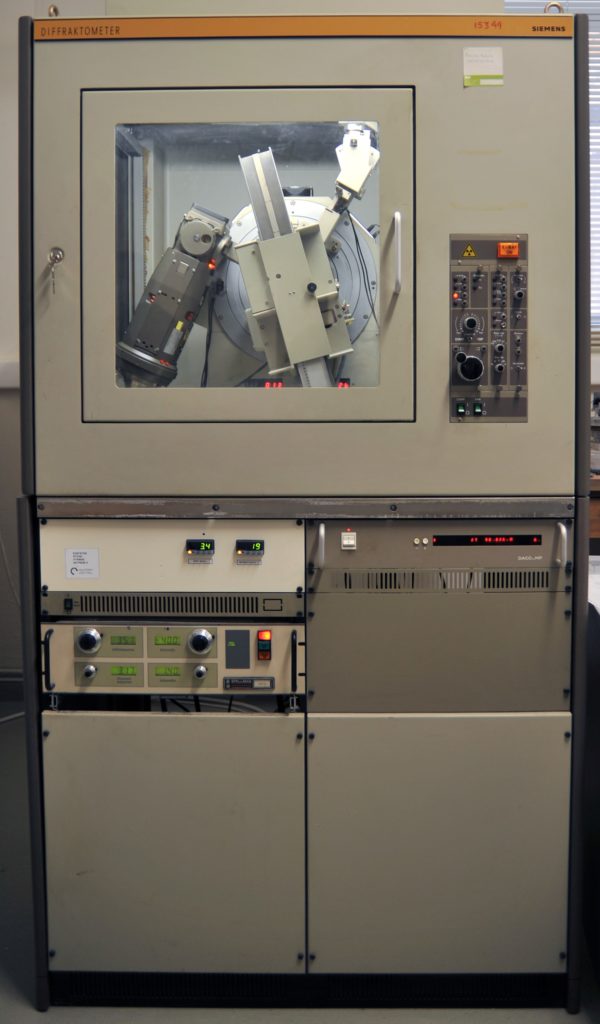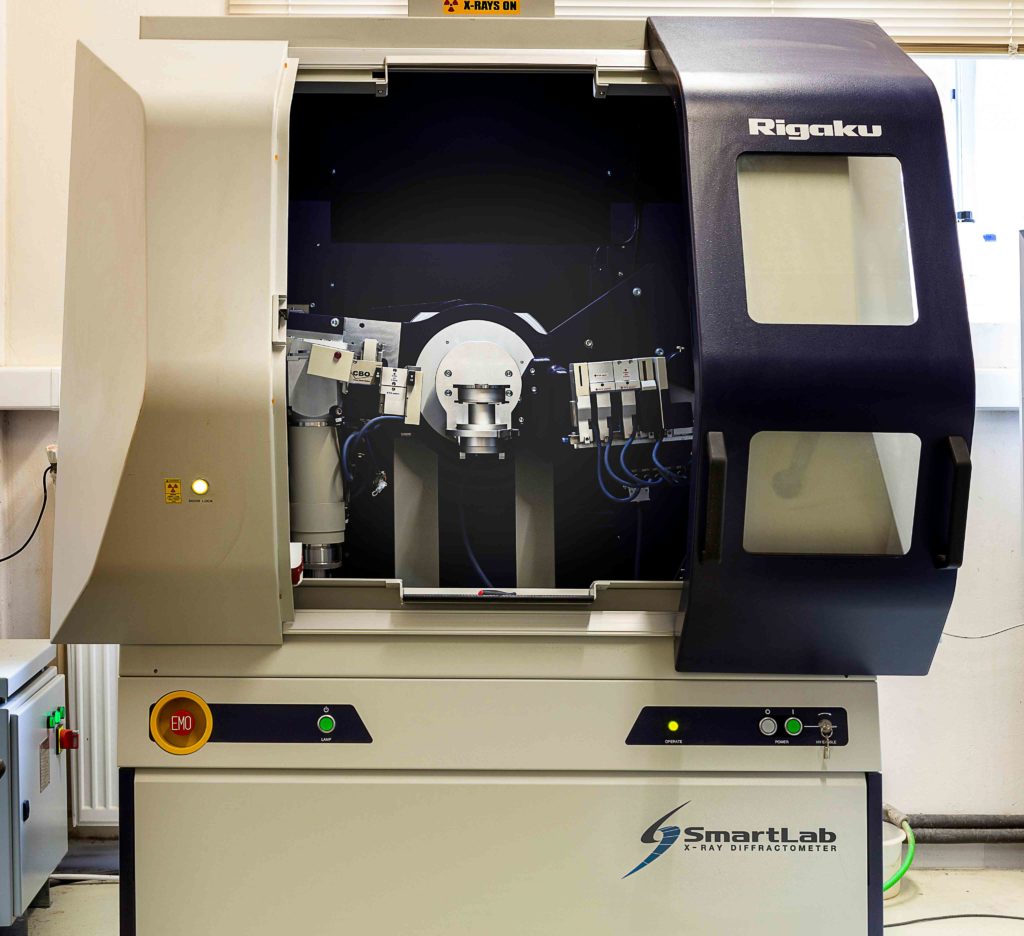X-Ray Crystallography
X-ray diffraction is a basic technique to study the structure of materials. Two basic techniques are available depending on the form of the crystalline material under study, single crystal and powder diffraction. With the data collection and analysis of data from single crystals a complete crystal structural model could be obtained. SCXRD studies are performed with different wavelengths (Cu and Mo) and at different temperatures (from Room Temperature down to 100 K) using all the available software for structure solution and refinement programs. Twin crystals, disorder structures and complete intermolecular interaction studies are performed using the appropriate software.
PXRD studies are performed at room temperature and the materials are characterized qualitatively and quantitatively. Structural characterization is performed using the Rietveld method and also quantitative phase analysis is possible by using the same or other empirical methods. In the Smart Lab Diffractometer in addition to typical analysis of thin films which is performed also with all common diffractometers, the use of the DCO optics device give the possibility to perform X-ray reflectivity, Grazing incidence and mapping scanning of thin films. With this diffractometer also Small Angle X-Ray Scattering (SAXS) measurements are performed.
-Software for the analysis of Powder diffraction diagrams: JADE 7, PDXL 2, Fullprof, Profex
-Software for the analysis of Single Crystals: Crystal Clear, WINGX(GUI), OLEX-2(GUI), SIR, SHELXS-SHELXL
Three instruments are available with the following Characteristics:
D500 SIEMENS difractometer (Θ/2Θ scan)
-Cu radiation
- X-ray Generator of 3KW
-Geometry: Bragg-Brentano/parafocusing
-Optics: slits/soller slits/ secondary pyrolitic graphite monochromator)
Sample holder: sample holders for powders, thin films and zero background plates for measuring samples of small quantity. The measurements are performed using the 40-position sample changer.
-other capabilities: the independent movement of θ or 2θ angles give the possibility to perform ω scan or rocking curve measurements.

Smart Lab Rigaku diffractometer (Θ/Θ scan)
-Cu radiation
-X-ray Generator 3KW
-Geometry: Bragg-Brentano/parafocusing
-Optics: slits/soller slits/ secondary pyrolitic graphite monochromator), DCO mirror for reflectivity measurements and production of parallel beam. Grazing incidence measurements.
-Sample mounting stages for measuring powder samples, thin film samples, 4”” wafers.
-Slit system, sample mounting stage and vacuum path unit for SAXS (small angle X-ray measurements)
-Automatic 10 sample rotating sample changer

R-Axis Spider Area Detector System for single crystal studies
-Cu, Mo, Fe, Co radiation
-X-Ray Generator 3KW
-Tree circle goniometer
-Optics: collimators (conventional and capillary optics), primary pyrolytic graphite monochromator
-Goniometer heads for sample mounting
-Curved large area Image plate detector
-X-Stream 2000. Low temperature unit, with Nitrogen generator, He compressor, stainless steel hose and nozzle for delivery of nitrogen on the sample and system that controls the temperature stability. Temperature range operation: 100K-RT.
-Measurement of single crystals with 1mm size and smaller and powder samples in capillaries.
